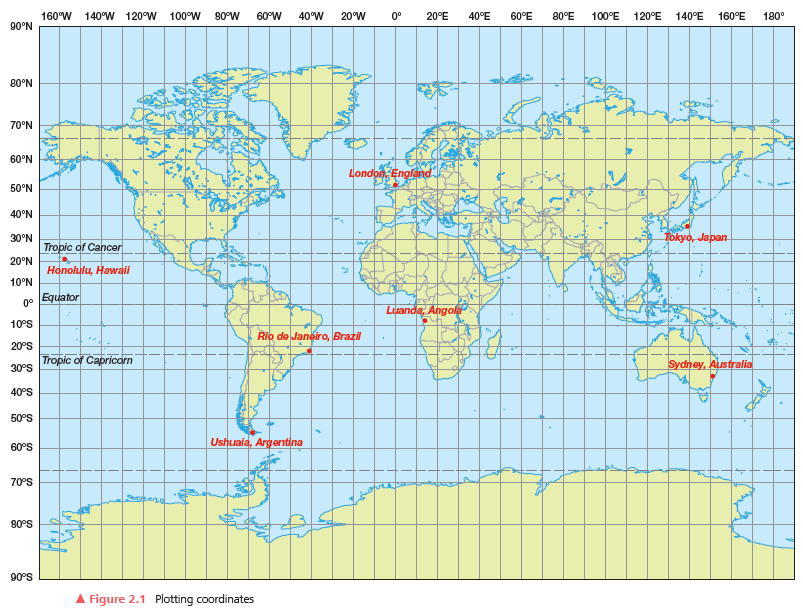The table also shows that the linear distance separating each 1° of longitude decreases toward the poles. For example, at 30° latitude each degree of longitude is separated by slightly more than 96 km (nearly 60 miles), and at 60° latitude, the linear distance is reduced to approximately half that at the equator. For each of the following latitudes, determine the linear distance in kilometers and in miles for 15° of longitudinal arc (along a parallel):

a) 30° latitude
b) 40° latitude
c) 50° latitude
d) 60° latitude
km
a) 15° x 96.49 km = 1447 km
b) 15 x 85.40 km = 1281 km
c) 1075.50 km (15 x 71.70 km)
d) 837 km (15 x 55.8 km)
miles
a) 15° x 59.96 mi = 899 mi
b) 15 x 53.07 = 796 mi
c) 668.25 mi (15 x 44.55 mi)
d) 520.05 mi (15 x 34.67 mi)
You might also like to view...
Which of the following terms best describes the practice of environmental science?
A) Highly specialized B) Integrative and interdisciplinary C) Abstract D) Theoretical
Remote sensing is the collection of information and data about distant objects or environments
a. True b. False Indicate whether the statement is true or false
Over the last few years, the largest source of immigrants into the United States has come from this country
a. Canada b. Mexico c. China d. India e. Afghanistan
As an air parcel aloft moves northward from the equator, it moves closer to Earth's axis of rotation. Because of the conservation of angular momentum, the air parcel's motion should
a. remain constant. b. slow and eventually reverse direction. c. slow but continue in the same direction. d. increase in speed. e. decrease in speed.